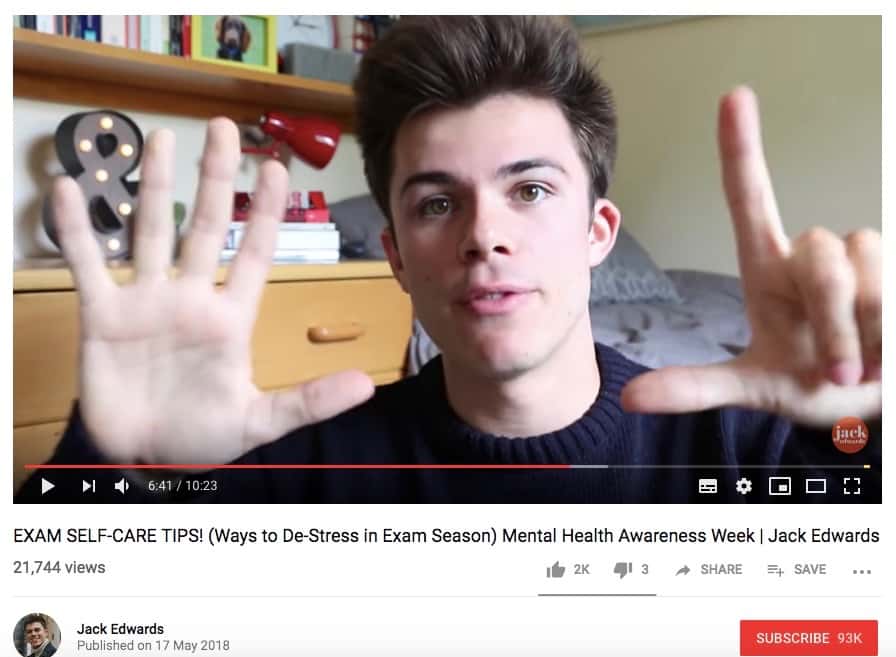This fourth instalment in the Presentations series is all about having an impact on your teacher or class. To do that we’re going to talk about planning your communication and practising your speaking.
When Planning
To make sure your communication is clear you have to start by asking yourself 3 simple questions:
Question 1:
‘Why am I giving this presentation?’
I don’t mean that you should have an existential breakdown because of your task though! Instead I want you to think about the purpose of your activity. Is this to express an opinion? Are you supposed to give a summary of a philosophical debate? Are you meant to be explaining some research you have done as a group? Once you know what your purpose is you can make sure that every sentence you speak and every word you utter contributes to that purpose.
Question 2:
‘Who are my audience, and what do I want to teach them?’
This is an important one to ask, because your audience will determine the level of your presentation. In your ToK presentation, for example, you will be speaking to your whole class. This will mean that you may need to give a lot of context as your peers may not know much about this topic. But when you give a presentation to your English teacher on a set text you can assume that she or he already knows a lot about the play. Therefore you can go straight into making your points, without so much background to help your teacher understand.
Question 3:
‘How can I get my point across?’
Sometimes you may be giving presentations in which speech is your own tool. For example, you may only have half an hour to prepare for a speech on an unseen poem. In other cases, like the ToK essay you may have weeks to prepare. In this case you need to choose the medium that helps you best your point across. If you’ve been doing an experiment you might want to use a lot of pictures to help. Maybe you need graphs to communicate data, or perhaps some key numbers to help the audience remember your statistics.
When Speaking
Be Slow
This is point number one because so many students get it wrong and lose points in the assessment. If you watch your friends presenting you will notice that people who are normally totally clear start talking at 100 kilometres per hour! Don’t be one of those people. When you practise your speech (which you need to do!) then record yourself. Play your video back and notice how quickly you speak. I bet you’re talking quick. That’s probably because you feel a bit nervous. Don’t worry, slow down and try again. You’ll have it soon.
KISS: Keep It Simple Stupid
It’s totally OK to make complicated and sophisticated points in your presentation. In fact, you’re supposed to do this! However, it’s also important that people understand what you’re talking about. This means that you shouldn’t assume people know the complex terms / ideas you’re talking about just because you know about them. In ToK it’s probably fair to assume that your classmates know about sense perception as an area of knowledge. But you probably don’t want to assume everyone knows what ontological paradoxes are until you clearly explain that term. So be careful to slowly and simply explain complicated or specialist vocabulary. Your audience will thank you for it.
Be Interesting
Everyone hates presentations that are dull and DRY. So remember the DRY rule: Don’t Repeat Yourself. This means, do not say the same word / phrase too many times in a row. Instead of saying ‘the poet’ over and over again, try saying ‘the author’, ‘the writer’, ‘Hardy’, ‘Thomas Hardy’ etc.
Finally think about how you are speaking. Try to sound interesting! You know the way adults talk to kids? The way the tone of their voice changes a lot? This is because it’s hard to keep kids interested. You need to do the same things. Vary the tone of your voice to keep everyone interested. If you’re talking to a big group you might choose an authoritative, powerful tone. If you’re talking to your teacher you might want to sound conversational. No matter the audience, try to sound interesting.
This article has shown you what to consider when attempting to be a clear, relevant speaker. That is, we’ve been considering what your class or for your teacher hears. Next time we’re going to consider how you can use what the audience sees to your advantage.
Previous posts in this series:
1) What you need to do and why you need to do it
2) Preliminary research and Time management
3) Including awesome content and keeping things logical
Read Part 5: Body Language and How You Appear






